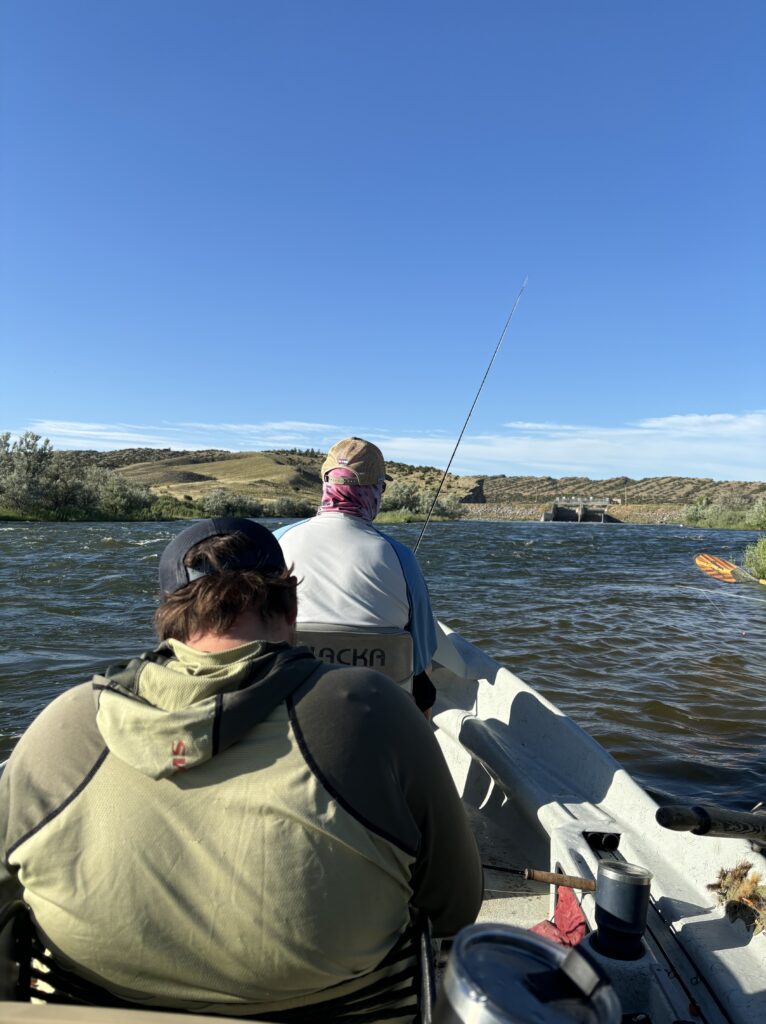I used to think I was a decent listener. That is, until I discovered a depth of listening that goes way beyond the surface. It helps me have better relationships, more mental peace, and a deeper impact. This way of listening makes my life more vibrant.
We listen every day, but we don’t hear as much as we think. When listening to someone else, we often listen to our own judgments, opinions, and thoughts.
Listening to others is the greatest gift we can give someone we care about. It is a gift of deep and nourishing presence.
Are you a good listener? What if there were a depth of listening you were missing out on? If you want listening to become your superpower, then read this article.
The Impact of Listening
Listening impacts our lives more than we realize. We use it daily, and even in every moment. We listen to others, to music and sounds, and to our own thoughts. Surface level listening creates boredom, poor communication, and conflict. When it comes from the right place, listening becomes more powerful. Purity of listening is possible at any moment. Listening in this way solves problems, resolves conflicts, and creates transformative breakthroughs.
We can develop and hone many listening techniques. While active listening, listening for information, and evaluative listening can all be useful, they lack depth. They only focus on hearing the words of others. These techniques aren’t bad, they just have a different focus than the kind of listing I will discuss.
Before I learned how to listen, I considered myself above average. I learned the techniques above and other skills like mirroring and labeling. As a weight loss coach, I practiced these techniques until they were natural. I thought that my listening game was superior and there wasn’t much more to learn. I was so wrong. By thinking I knew how to listen, I was missing out on being present with another person. Listening to be able to use my amazing techniques distracted me. Because I listened to my own thoughts, I only ever heard a personal interpretation of the words my clients said.
Recently, I discovered a way of listening that showed me just how much I was missing out on. Pure listening allows me to hear beyond the words of others and makes conversations more fun. It is nourishing for me and the person I talk with. This type of listening allows for a greater understanding that creates clarity and grace.
Avoiding Arguments
The following story shows the power of this kind of listening:
I was having a discussion with my wife in our bedroom. We have a 6 month old daughter, and I got child care lined up before so I could meet with more clients over the next two weeks. I scheduled two extra sessions and thought nothing of it. She didn’t think the same way and told me so. She said I was working too much in my business. We were in the pre-argument conversation phase. It was a disagreement, but I could tell that it had argument potential. It carried that kind of weight.
I tried to get her to see it from my point of view. Patiently, I explained how I was getting more clients. I thought I was trying to help her understand, but really I was being defensive. This defensiveness could have led to a fight. Instead of digging in my heels, I listened.
I slowed down to take in what she was saying. Suddenly, I heard her in a new way. I saw her concern more clearly.
There was caring, love, and fear behind it. My wife wanted to make sure Eliana, our daughter, was a priority for me. She knows my inclination to become obsessed and hyper-fixate, and she didn’t want to see that happen. She knew it would be bad for her, for the baby, and for me. Instead of nitpicking my choices, she was actually concerned for my well being. Pausing, I took a second before I spoke to that.
“I hear that you don’t want me to over focus on my business,” I said.
“I want my business to add to my life, and I agree that I don’t want it to take away from it,” I added.
My final comment was, “Thank you for bringing this up so I can be more aware of how I am balancing my priorities.”
I spoke from my heart, not from what I thought I should say to placate her. This was only possible because I listened deeply enough to hear what she was saying. The extra sessions with clients weren’t the real issue. If I hadn’t listened in a deeper way, we would have only talked about the surface level problem, making it bigger. Instead, I saw how much she cared for me and where we agreed.
This level of listening is available at all times. Most of the time, we are too busy to notice it. Often our external environment distracts us. Phones, Television, and social media are big culprits here. Yet, they are nowhere near as insidious as the distracting thoughts inside our own head. To listen purely, we have to dismiss our thoughts.
Focused, Evaluative, and Problem Solving Listening

Other types of listening can also get in the way of hearing with presence. We learned how to listen in school in a way Mavis Karn calls Focus Listening. How many times have teachers told us to “pay attention,” in class?” I was a teacher for 5 years, and my well intentioned pleas often fell on deaf ears. Paying attention is hammered into students, but it isn’t deep listening. To be good at this type of listening, we only have to look like we are listening. Be attentive. We face the speaker and sit up in our seats.
We only want the facts.
Focused listening uses short term memory so that we can recall the important bits of what was said. It is a listening device that acts as a filter. Because we are evaluating information, we ignore the majority of what we hear. There also is no emotional engagement with focused listening. When a child or spouse listens in this way, it seems like they are listening because they can repeat back what was said. Yet, meaning is not taken in. There is no depth of understanding or behavior change. Meaning is ignored in favor of disconnected information.
In focused listening, the goal is to take in the information. With evaluative listening, we become critical of that information. The listener asks “Is that true?” or “Do I agree with what is being said?” A movie critic watches movies with evaluative listening. They watch for what is wrong with the film. When we listen in this way, it often leads to arguments. Instead of focusing on understanding another human, we focus on what is wrong with what they are saying.
An insidious type of evaluative listening is listening to solve or diagnose. Therapists, coaches, doctors, consultants, leaders, and spouses often use this type of listening. They are trying to play a matchmaking game in their heads as they listen. They are trying to match a problem to a solution or symptoms to a diagnosis. When this listening happens, there is analysis and judgment. Once they feel like they found a solution or diagnosis, they stop listening. Misdiagnosis and poor decisions happen when we over rely on this type of listening. Mistakes tend to happen when we jump to the first solution that comes up rather than listening fully. I used this type of listening as a weight loss coach. So busy in my mind with solutions, I wasn’t present.
None of these types of listening are bad. There is a time and a place for focused, evaluative, and problem solving styles of listening. It is all about timing. When someone wants to be understood, heard, and held, then it is not the time for techniques. There is another type of listening that is best suited for connection.
Pure Listening
Mavis calls it high impact, low effort listening or Deep Listening. In this article, I am calling it Pure Listening. The label doesn’t matter. What matters is how it makes the person you are listening to feel. In the presence of pure listening, the speaker feels seen, understood, and connected. They feel deeply appreciated without a hint of judgment. Pure listening is a beautiful gift that anyone can give.
Pure Listening sounds great Rich, how do I do it?
Unlike the other listening techniques, pure listening is not a skill. It is not something you can develop or learn. You already have this ability within you.
It comes from a completely different place than skill based listening. While techniques are intellect based, pure listening is soul based. It comes from your conscious awareness, beyond your thoughts in the moment.
This listening is easeful. There is no effort involved. You don’t have to bear down and listen harder. One can not find it through concentration or focusing. Rather than being a skill, it is more a state of mind we can get into. If listening ever feels hard or challenging, we are going in the wrong direction.
Pure listening is not active, it is passive. It flows with the conversation. There is no place to get to. Instead, there is a relaxation into expansiveness. We take in what the other person says with an open spirit. There are no steps to find the space of pure listening.
Really, the best advice I can give is to ignore your personal thoughts that come up as you listen. Pass by the rabbit holes of your mind. Make understanding another person more important than anything going on in your head. It is more of a feeling than a mental process. The feeling you are looking for is the feeling of connection.
Instead of laying out steps on how to listen in this way, I will describe it. This description will help you recognize and access it more often. I encourage you to re-read it.
What Pure Listening is Like

Pure listening comes through us when we get out of the way. When we set aside the need to figure out the best way to listen, it is there. It works best when we aren’t formulating what we are going to say as we listen. Most listening techniques actually get in the way of deep, soulful listening. Instead, we listen from a quiet space within.
The feeling of listening is simply pure presence that we have gotten out of the way of.
Surface level listening is often uninteresting, uncomfortable, and unrewarding. Pure listening comes from a place of curiosity, openness, and receptivity. You hear and understand at a deeper level. You can hear beyond the temporary internal experiences you create. This is a rich depth to explore. There is no limit to how deep you can hear.
The space of listening is always available. It never leaves us, even if there are times that it feels like it does. Our own thinking and analyzing gets in the way. It is a constant in our lives even if it hides beyond our temporary mental storms. Our listening is never lost, even when we are. Listening remains. It is impersonal and subjective.
Irreplaceable, your listening presence cannot be replicated or recreated in any way.
You can always be in a space of listening. It doesn’t matter what is going on in your mind. When you have a thought storm, you can listen to the thought storm. When there is silence, you can listen to the silence. If you have physical or emotional pain, you can listen to the pain. The space of listening is separate from any mental, emotional, or external content. It comes from a soulful space within.
Listening comes from peace. It is a space untouched by whatever it is listening to. Nothing and no one can harm it in any way. No matter how painful or challenging the topic, listening remains untarnished. Listening comes from beyond us. The story of who we are doesn’t factor in because our ego character is not what listens. Who we really are is the listener. It is beyond concepts, ideas, efficiencies, and improvements.
Because it is an absence of judgment, listening is a loving of what comes in, a pure acceptance.
Listening to yourself is as important as listening to others. You are listening for your own wisdom and insights. Listen to yourself from an open space and wait until you hear something that rings of spiritual truth. Listening is just a quiet and open waiting. We aren’t waiting for anything in particular. Listening is a powerful patience that allows for something new to come through.
Sydney Banks said, “Truth, when heard is the healer of all things. If everybody in the universe could hear, there would be no problems. There would truly be heaven here on earth.”
It is our ability to hear the truth of ourselves that gives us freedom.
Beyond Conversations
As I deepened my ability to listen, I learned that this goes way beyond conversations. I realized that I can use pure listening in all aspects of my life, in every moment. It can become a way of being.
I don’t have to be in a conversation to listen. Listening can happen during any activity. I can listen to outer sources like music, talking, and birds chirping. I can also listen within, to my own thoughts, emotions, and body. You can use it in this way too.
Here, listening is a metaphor for present awareness.
This listening is not limited to a single sense. One can listen with their eyes to take in a majestic mountain range. One can listen with their fingers to play an instrument. They can listen with their nose as they take in the aroma of freshly ground coffee. One can listen to the soft patter of rain on the roof. Massage therapists listen to muscles to help them relax. Golfers listen to the conditions of the green to take their next shot. Listening comes from beyond the senses.

There is no difference between listening and the state of meditation. We can only ever purely listen from a meditative mind. This doesn’t mean a mind void of thoughts. Thoughts and meditative listening can exist at the same time because the listening comes from a space beyond thoughts.
Listening is a state of not grasping. We allow any experience and hold on to none. Thoughts, experiences, and sensory information can flow. They are not blocked from coming in or blocked from exiting. A listening mind welcomes all guests and lets them leave as they will. The doors of perception are wide open. The city gates never closed. Don’t close and lock them.
When we are listening with presence, there is a fullness. Life takes on a rich texture. Everyone experiences this, but many miss it because they attribute it to something external: a person, experience, or situation. A vacation can bring pure listening out of a stressed out executive or parent. What they don’t realize is this experience is available to them at any time, not only on vacation. It is separate from, beyond situation. We all have it. It comes from the peace of who we are.
Listening on the River

When I wrote this, I was fly fishing on the North Platte River. For three days, my father and I fished with a guide on a small boat. As we floated down the river, I listened to the line and the bobber in the water. My listening deepened as the days progressed. We caught over a dozen fish the first two days, but I had only caught one on the afternoon of the third day. Raindrops fell on the river. As it rained, our guide paddled us down river to escape the weather.
I felt inspired, so I took out my phone to jot down a note about the experience I was having as I listened and fished. Words began to pour out of me. One note soon turned into a paragraph and then an article. I had to work to keep up with my ideas. I would pick up my fly rod only to put it down when another thought sparked into my consciousness.
We floated, I listened, and I wrote. The more words I got down, the deeper my listening presence became. The world around me started to take on a vivid quality that was breathtaking. I remember the pale yellow of the grass as it flowed in the gentle currents of air. I heard the sound of the paddles digging at the water. Eventually, I set my rod down completely to write as much as I could. I wrote most of this post on the river that day.
I felt finished and stopped writing as we flowed around a bend and under a bridge. Suddenly, I dropped into a new experience of the river. I saw light dance as the waves cascaded over each other. The water sparkled with an energetic aliveness. Vibrant rainbows materialized from the heart of the water. Beautiful. That is the only word that can describe what I was seeing from the state of pure listening. It was like the world had shed its skin and I could see what it hid underneath the surface. This is the truth of the world. We are blind to it most of the time.

Moments of Beauty
More and more, I get to have these incredible moments. Sometimes, I have them with others. I am suddenly struck by the authentic beauty of a client or family member. Often, I have them when I am alone. One day, I was driving to the cabin when flowers on the side of the road moved me to tears.
There is a movie that captures this idea well. In the movie Pleasantville, the television sucks the two main characters into a black and white television show. Their presence creates ripples in the quaint “Leave it to Beaver” town. As they change, the black and white changes to a pop of color. Characters and objects start to take on their natural hue and soon the town is colorful.
The film is a powerful take on themes of repression and authenticity. It also describes the experience of dropping into deeper listening. When we aren’t listening, our lives take on the dullness of black, white, and gray. When we let go of the noise in our minds, we see the fullness of vibrant color. The color was there all along.
The glory of the world will open itself to you. All you have to do is let it.
All this and more is there when we drop out of our own minds and into the space of pure listening. I am not there all the time. I still live in my head at times, but I now know that the opportunity is ever present. It doesn’t happen because of something I did, worked at, or cultivated. It happens because I let go.
Emotions Guide Us to Listening Presence
If we find ourselves in a place of not listening, that is ok. It is a part of the human experience. It will never feel good. Stress, upset, and frustration, and anger warn us when we are not in a state of receptive listening.
Uncomfortable and contracted feelings help us relax back into listening awareness. The experience of life takes on beauty as we come from the space of listening. Even painful emotions like sadness have their own beauty. It is ok if the experience is ugly. Grief, for example, does not have to be beautiful, but it can be. Just knowing that the space of listening is available acts as a powerful anchor when we get lost.
Now, I don’t consider myself a “good listener.” I know that the depth of my listening is always fluctuating. I also know there is more that I am not hearing. Sometimes, I am not as “dropped in” as I could be. My wife has told me that for all the time I talk about and write about listening, I don’t do it very often. She is right. I get distracted and caught up in my head. We all do.
Yet, I have seen profound changes in our relationship after I found this way of listening. I have seen our arguments and fights all but disappear. Our connection continues to improve.
My ability to impact the lives of family, friends, and clients has grown. I get to experience more moments of sublime presence.
I am not perfect at listening. This is a good thing to acknowledge, because it leaves room for a deeper experience. We can always see and hear more. There is no limit to the infinite depth of listening.
The listening I talk about here is a metaphor for a direct experience. It attempts to describe something that can only be felt. Look for that space of listening within you. Begin to get a feeling for it. Don’t try to create it, but instead, notice when it comes, and when it doesn’t come.
Really, listening is just noticing. Notice. Then, you are there, or you aren’t. Both are ok.
Resources
My name is Rich Life and this is a Realization Reading. I invite you to take part in a transformative conversation.
Much of my writing is based around the 3 Principles understanding of Sydney Banks, and enlightened Scottish mystic. Learn more about him here. The 3 Principles of Mind, Consciousness, and Thought he discovered helps us to understand the nature of our experience.
Those who explore this understanding find that their lives transform. Read more articles if you would like a richer experience of life. If you would like to connect, let me reach out to you or sign up for my mailing list and get Insights in your Inbox.
Please help me reach more people with the message that the core of who you are is peace, love, and connection. Share this article with someone you care about.
Enjoy this podcast episode about listening:
If you liked this, you might also like learning more about your enlightened nature.
Your vibrant life is a single thought away.


Leave a Reply